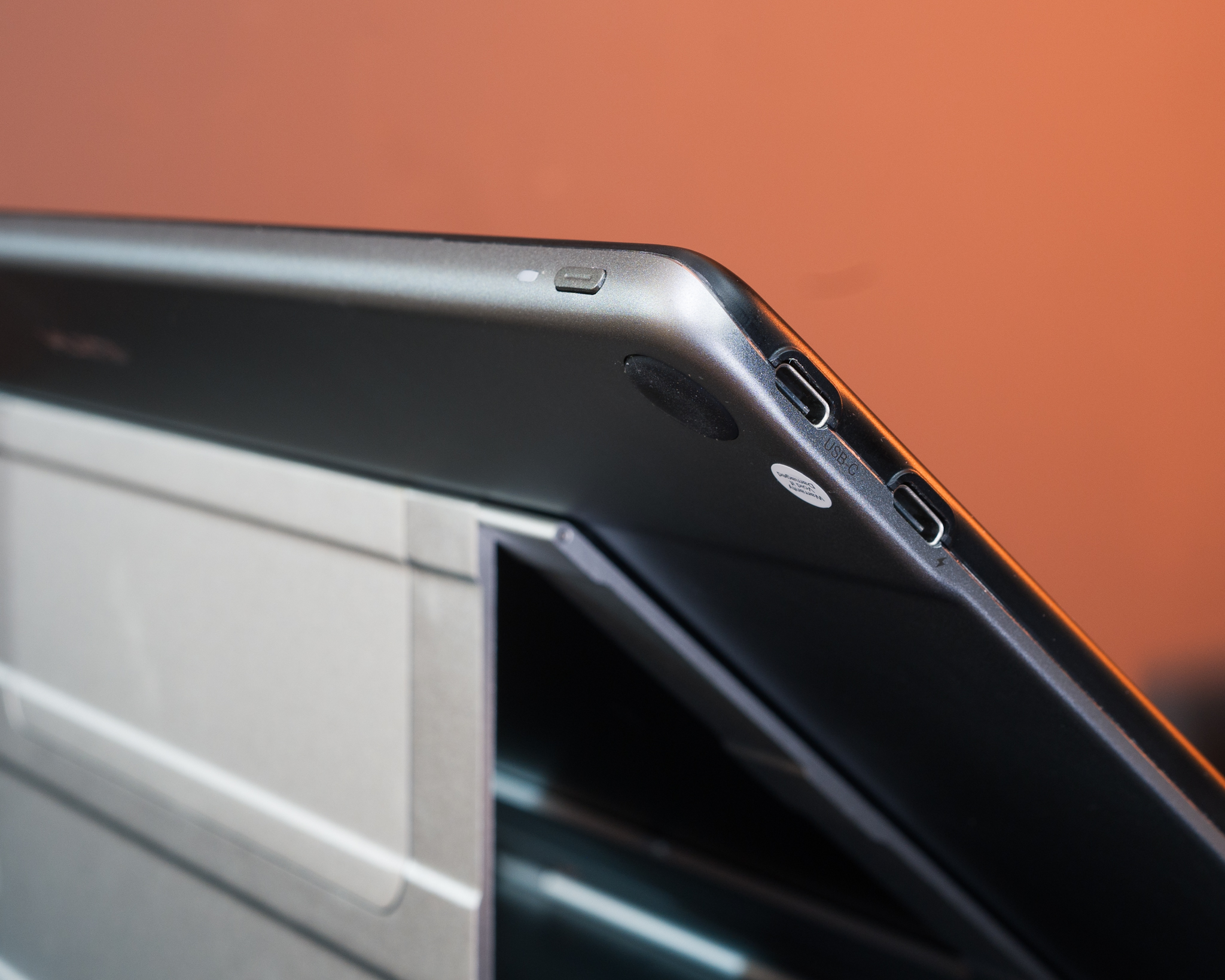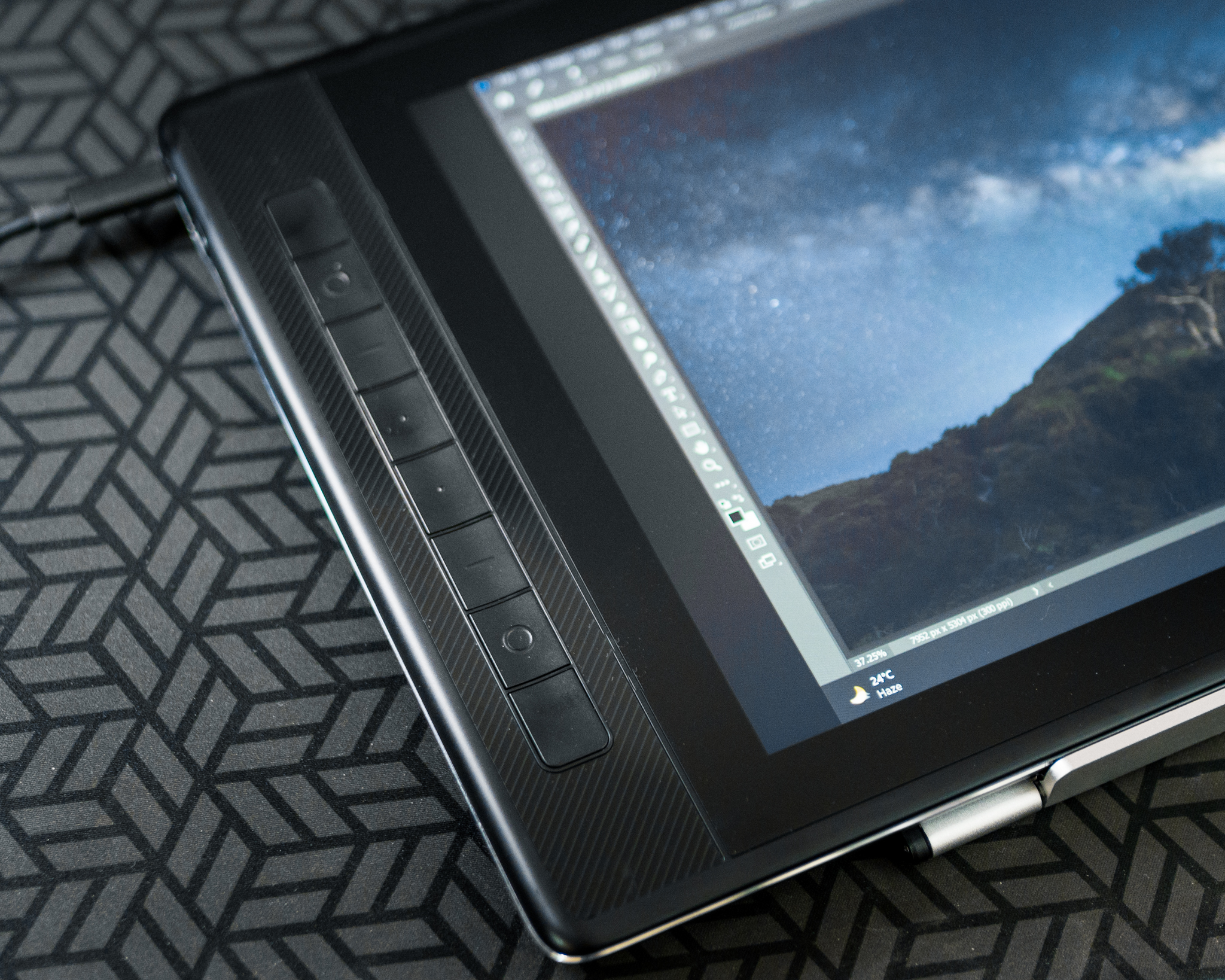Are you looking for a display that will make your precision editing and retouching more convenient? Let’s check out what a high-resolution pen display tablet can offer.
Having a graphic pen tablet can be a great way to enhance your editing process especially if a lot of retouching or manual blending is involved. The pen allows you to make finer and more precise inputs on your virtual canvas that leaves less room for errors, especially when working on very detail-rich images. Even more so, having a pen tablet with a high-resolution display makes the process not just more efficient and precise but also more physically comfortable. Of course, this display must also show you the intricate details with clarity and with accurate colors. In this review, let’s see what the Huion Kamvas Pro 16 (2.5K) pen display tablet has to offer.
Physical Features and Design

The Kamvas Pro 16 comes in a surprisingly slim and lightweight form. This 15.8-inch (diagonal) display tablet has an 11.5 mm thickness with a 436.2 x 247.3 mm body. The active area takes up 349.6 x 196.7 mm of that size to leave room for the eight programmable custom buttons. The display features fully laminated etched glass to reduce glare and light reflections as well as to minimize smudging on the surface. This also controls the friction applied to the pen’s tip to provide a more paper-like feel. On the back is a thin aluminum panel with thin rubber stoppers to provide stability when in use.

This can be placed on an included adjustable stand that allows for six different tilt angles for better positioning and comfort. While this is quite a good number of options, the fact that this pen display tablet also functions as a secondary screen, it would have been great for more upright options for situations like using it only as a display and also as a way to reduce the amount of space it takes up on the desk.

There are eight fully customizable buttons on the left-hand side which can be programmed for shortcuts and hotkeys depending on what software is being run, as well as some navigation shortcuts, quick menu access, and quick access to media. It would have been great to have at least one knob or even a side dial or touch slider for scrolling through menus or pages, as well as precise adjustments in zooming in, brush size, opacity, etc. On the left corner of the top panel is a power button that doubles as a menu when held down. On the adjacent side, the panel are two USB Type-C ports that provide all the connectivity as well as display and power input of the Kamvas Pro 16.

The package includes multiple cables to match your preferred connectivity setup. A straightforward USB-C to USB-C cable for compatible devices, a three-in-two cable with full-sized HDMI, one USB-A for data, and another USB-A for power, all of which connect to a double USB-C L-type tip that was tailored to the ports of the device. It also comes with a USB power adapter, an extension cable, and a half glove to better prevent smudges on the surface.

Setup and Customization

The initial setup of the device is pretty straightforward. Upon installation of the driver, you can access a menu that allows you to customize the buttons on both the tablet and pen, as well as the orientation and placement of the effective area of your display window. The customizable buttons can be set as shortcuts to keyboard key combinations, mouse keys, shortcuts to programs or apps, shortcuts to media, or navigational tools. This is a great way to enhance efficiency in using specific editing software without having to switch from the tablet and the keyboard so much.

The display can also be rotated at 90, 180, and 270 degrees according to your preference and comfort. However, doing so will affect your cable arrangement so that is something to consider. Since the tablet is a separate display on its own, it can be set up either to mirror one display or be a separate display/desktop altogether. This not only benefits your workflow but also allows multitasking to an extent. Calibrating the display to make sure that the pen inputs are accurate requires the simple step of pointing the pen onto nine points across the screen. Pressure sensitivity and patterns can also be very easily calibrated to better suit your use.

The Pen

The included pen operates without any batteries. This lightweight pen that is thin on the distal end and gradually increases in girth towards the tip allows for a better grip that provides more precise movements. It has two similarly customizable buttons within the reach of the pointer finger or thumb and a replaceable tip. It comes with a pen stand that opens to reveal the five extra standard plastic nibs and five extra felt nibs as well as a clip tool to remove and replace the nib.

The pen can give uninterrupted input onto the sensors on the surface of the tablet even with a 60-degree tilt on any side. It has 8,192 levels of pressure sensitivity which is way more than what a photographer would need for common editing workflows and a resolution of 5,080 lines per inch.
Display Resolution and Color
The Huion Kamvas Pro 16 offers a QHD resolution of 2,560 x 1,440 pixels in a 15.8-inch diagonal panel. It makes use of a 60Hz IPS LCD panel with a maximum brightness of 220 nits, a contrast ratio of 1200:1, and a response time of 14 milliseconds. It covers 145% of the sRGB color space, capable of displaying 8-bit color.

Given the color specifications, the product nor the software gives no information on color accuracy ratings nor does it say anything about color calibration device compatibility. While this can be calibrated much like any other IPS display, it would have been great to include information on recommended methods or even perhaps an integrated way to do so with the device driver. However, it has various preset modes for editing, gaming, and playing movies since the tablet doubles as another 16-inch monitor.

For a size of 16 inches, the tablet offers more than sufficient resolution when you factor in pixel density within the effective area. Based on the numbers and the experience of using the device, it can display the necessary details that one would want to see when editing. Perhaps the only limitation on this device in terms of perception and user experience is the maximum brightness of 200 nits which can be quite easily overpowered by ambient light. However in a controlled lighting environment, using the Kamvas Pro 16 allows for a precise, efficient, and comfortable working experience.
The Huion Kamvas Pro 16 (2.5K) more than anything, offers a comfortable and efficient way for photographers to fine-tune their images. The significantly sized 16-inch display not only acts as a precision input tool for editing but also makes the process of intensive manual editing more comfortable and straightforward.
What I Liked:
- 16 inch 2.5K QHD display
- 8 + 2 customizable buttons
- Fully customizable display layout
- Vari-angle tablet stand and battery-free pen
What Can Be Improved:
- Low maximum brightness at 220 nits
- One-sided port placement







$600...not bad...
My son has one of these that he uses for his digital art. He prefers it to the Wacom tablets he gets to use at his university. Great review, thanks.
Thanks Ivor! I was pleasantly surprised by how useful this is both as a tablet and as a secondary monitor :)
Exactly how he uses it. I'm tempted to get one myself. Thank you for a great review. It was a good read.
@people who are (for some reason) into editing on a mobile device; how do you ever find the right brightness in your probably form day to day changing surroundings, so you won't make your images too dark or too bright?
And the same for the white balance probably. Serious question.
I dont think theres a standard way for this but perhaps adjust to the brightness that allows your screen to blend well to the lighting environment around you.
I use a Huion tablet for my editing and it works just as well as a Wacom at a fraction of the price. Zero issues. Wouldn't hesitate to buy another one.
I agree. Its a great affordable option
Hi, This is a nice and pretty helpful article. Huion Kamvas Pro 16 looks pretty good.
personally I will recommend XPPen Artist Pro 16 display drawing tablet since it sleek, hardy and has the best graphics.it worth trying it out. After a year of use I found the tracking and pressure sensitivity good in sketchbook and Photoshop.